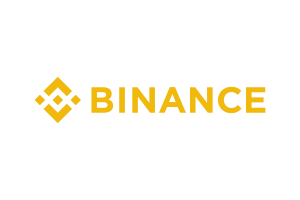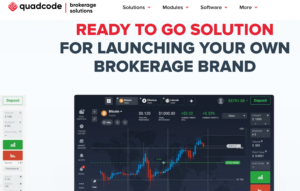America’s chance to concentrate on Tier 1 prime brokerage is on the cards
American banks may be able to separate their interbank dealing divisions from their commercial and retail traditional banking divisions, paving the way for specialist prime brokerage business at Tier 1 level. This, if it goes ahead, would go some way to resolving the liquidity crunch that faces many OTC firms

Retail banking is clearly regarded as a nuisance by the large, London-based banks that conduct over half of the world’s FX and electronic trading order flow at Tier 1 level.
London used to be the banking capital of the world. Now it is the electronic trading and interbank dealing capital. With Barclays having ditched a further 7000 traditional bank customers and having shed entire continental retail branch operations, a sole focus on interbank FX dealing on its BARX platform is just one example of how banks, when operating as a unified entity that consists of commercial, retail and investment banking divisions, is not a happy situation.
The giants of the world’s interbank dealing sector consist of a combination of British, American and German banks, however London’s Canary Wharf is their organizational home, and although commercial and retail operations of the banks that dominate the Tier 1 liquidity sector are part of the same corporate entities, the de facto position is that these banks view their Canary Wharf glass towers as not only separate divisions, but vital core business units.
It would take a very dedicated Europhile to make a case that resembles any form of plausibility to even suggest that the European Union – where Deutsche Bank has its roots – is anything other than a derelict ruin when it comes to financial markets activity, hence Deutsche Bank, its market share in interbank FX dealing amounting to 7.86% of global order flow, representing the fourth largest interbank dealer in the world, operating its main revenue earning base from just one office in London.
The British banks are pulling out of mainland Europe’s retail banking stalemate situation, and focusing on London’s electronic financial markets.
But what about America?
London may well be the banking and interbank electronic trading capital of the world, but North America’s main financial centers of New York and Chicago have long been the investment banking powerhouses that specialize in hedge fund investment, proprietary trading and exchange listed futures via the giant listed derivatives exchanges.
The Dodd-Frank Wall Street Reform Act, which was sworn into federal law in 2010 by former President Barack Obama, one of America’s least business-orientated leaders in modern history, encompassed a number of obstacles and bureaucratic irrationalities that encumbered the institutional sector in the US, one being the Volcker Rule, which sought to prevent banks from trading on their own account, a core business activity of most investment banking divisions of financial institutions, which at that time were wounded from the financial crisis which was largely down to retail banking over exposure rather than electronic trading derivatives exposures.
This may all be set to change very soon, as this week, President Donald Trump sets about modernizing an old, post-depression law that would separate the investment banking businesses of major institutions from their retail and commercial divisions by reviving the Glass-Steagall Act.
If implemented, this could create a New York-based elite of massive, long-established Tier 1 banks that would concentrate solely on liquidity provision and investment banking activities without the shackles of retail banking around their corporate ankles,
The Glass–Steagall legislation describes four provisions of the U.S. Banking Act of 1933 separating commercial and investment banking.
The separation of commercial and investment banking prevented securities firms and investment banks from taking deposits, and commercial Federal Reserve member banks from:
- dealing in non-governmental securities for customers
- investing in non-investment grade securities for themselves
- underwriting or distributing non-governmental securities
- affiliating (or sharing employees) with companies involved in such activities
Starting in the early 1960s, federal banking regulators interpretations of the Act permitted commercial banks, and especially commercial bank affiliates, to engage in an expanding list and volume of securities activities. Congressional efforts to “repeal the Glass–Steagall Act”, referring to those four provisions (and then usually to only the two provisions that restricted affiliations between commercial banks and securities firms),[4] culminated in the 1999 Gramm–Leach–Bliley Act (GLBA), which repealed the two provisions restricting affiliations between banks and securities firms.[5]
By that time, many commentators argued Glass–Steagall was already “dead”. Most notably, Citibank, the world’s largest interbank FX dealer by volume with over 16% of the entire global market share, had a 1998 affiliation with Salomon Smith Barney, one of the largest US securities firms, and was permitted under the Federal Reserve Board’s then existing interpretation of the Glass–Steagall Act. President Bill Clinton publicly declared “the Glass–Steagall law is no longer appropriate”.
By reviving the Glass-Steagall Act in today’s environment, the end result would be entirely different. Back in 1998, there was absolutely no developed global retail OTC FX or multi-asset OTC trading industry to speak of, and only a few firms with proprietary platforms such as Matchbook FX, GAIN Capital and FXCM were in their initial stages of development and were very new entities.
For banks that have centralized risk management centers that have been over generous when lending unsecured credit to unemployed or self-certifying retail customers which did not have the wherewithal (or intention) to repay the loans, as there were very few risks or consequences from the side of the customer, but plenty of risks from the retail banking side which ultimately resulted in large global banks needing to be bailed out by governments on both sides of the Atlantic and in some cases, such as that of Lehman Brothers, left to face their bankruptcies alone, the upshot has been a massive curtailing of the extension of credit to OTC derivatives entities, with Citigroup itself having generated a report last summer which stated that the company expects a 56% default ratio on OTC counterparty credit.
Should President Trump proceed with the separation of investment banking operations from commercial and retail divisions, it may well result in the US giants on their home territory being the places to go for prime brokerage agreements, as no overbearing risk managers that are used to dealing with traditional banking will be able to stand in the way of good business.
In many cases, corporate fecklessness has compounded the liquidity crunch that has begun to affect retail FX brokerages which now need to show a balance sheet in excess of $50 million in order to gain a prime brokerage agreement with a Tier 1 bank.
Deutsche Bank finalized a $7.2 billion payment with the US Department of Justice during the latter part of 2016 which was made up of a civil penalty of $3.1 billion and provide $4.1 billion in consumer relief for mis-selling mortgage-backed securities, having agreed the settlement in principle last December.
That is certainly not chump change and is a problem that faced one of the largest FX dealers which did not stem from its FX division, but it is not the crux of the main problem at all.
In October last year, during the myriad of woes that faced Deutsche Bank and long after German finance minister Wolfgang Schaueble attempted to deflect investor discourse from the firm’s worries by stating that there is pretty much nothing to see here (when he knew full well there was), Deutsche Bank’s Chief Risk Officer Stuart Lewis piped up, playing down the bank’s £41 trillion derivatives risk exposure.
Stuart Lewis, Deutsche Bank’s Chief Risk Officer was questioned about its derivatives exposure, his response having been to play down the estimates that have been made.
“The risks in our derivatives book are massively overestimated. The €46 trillion figure sounds gigantic, but it is completely misleading. The real risk is far lower,” he said.
Mr. Lewis spoke publicly on October 9 stating that the €46 trillion relates to the notional value of derivative contracts rather than the real exposure to the bank, which he maintains is closer to €41 trillion.
This type of lack of senior level acumen would be dramatically reduced if investment banking divisions were run separately, and thus operated entirely from top to bottom by professionals who understand this sector of the business correctly.









